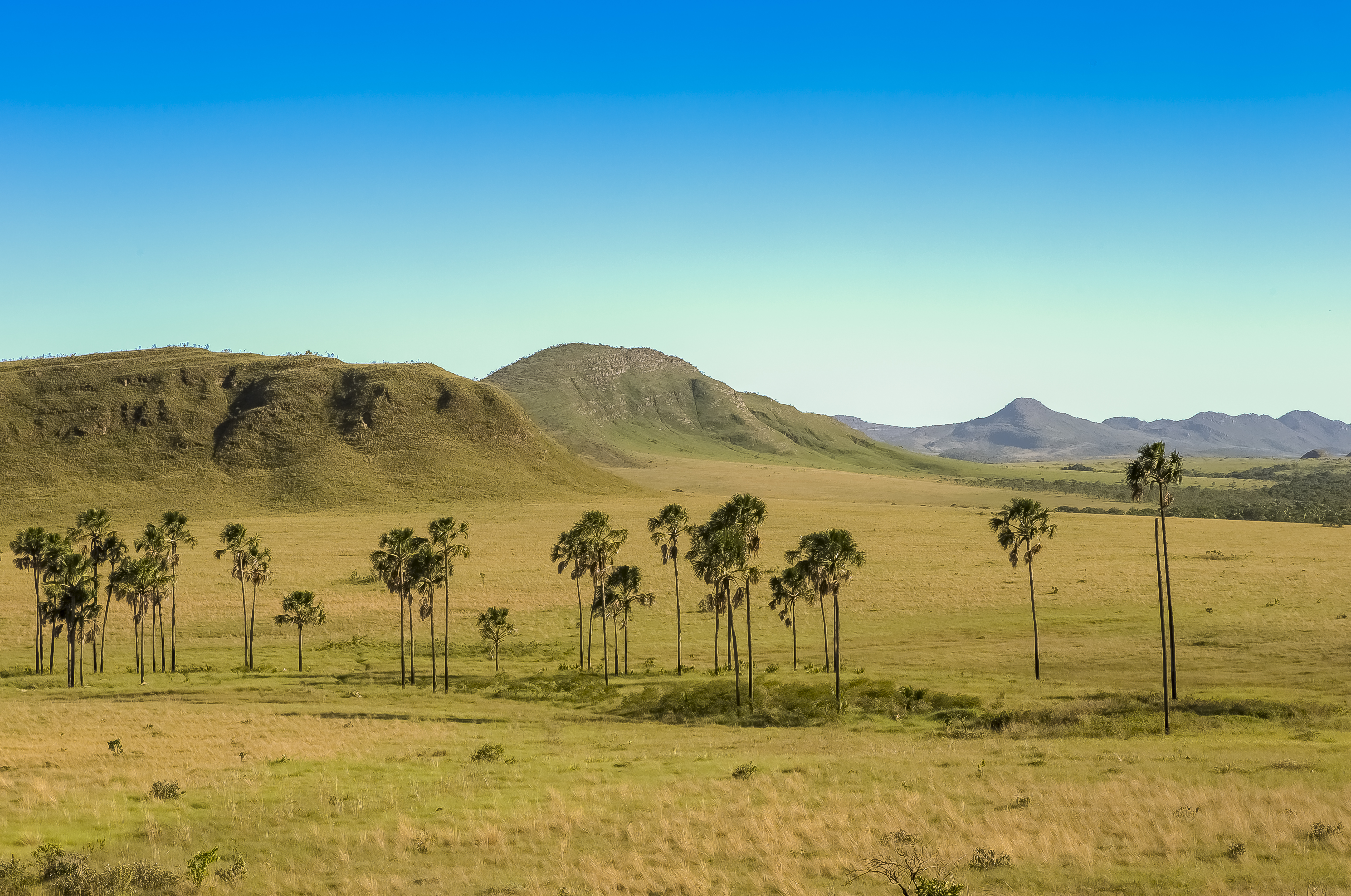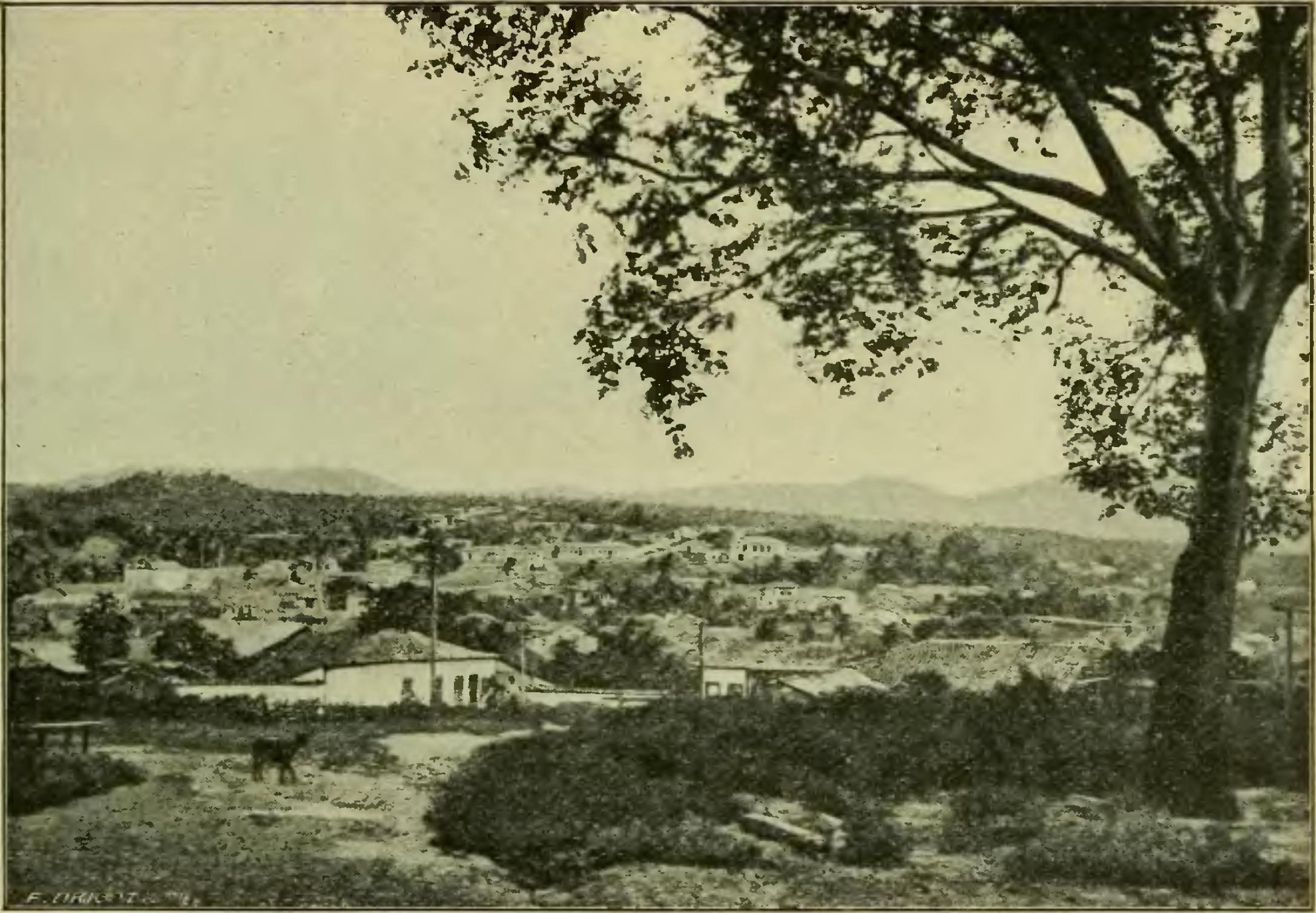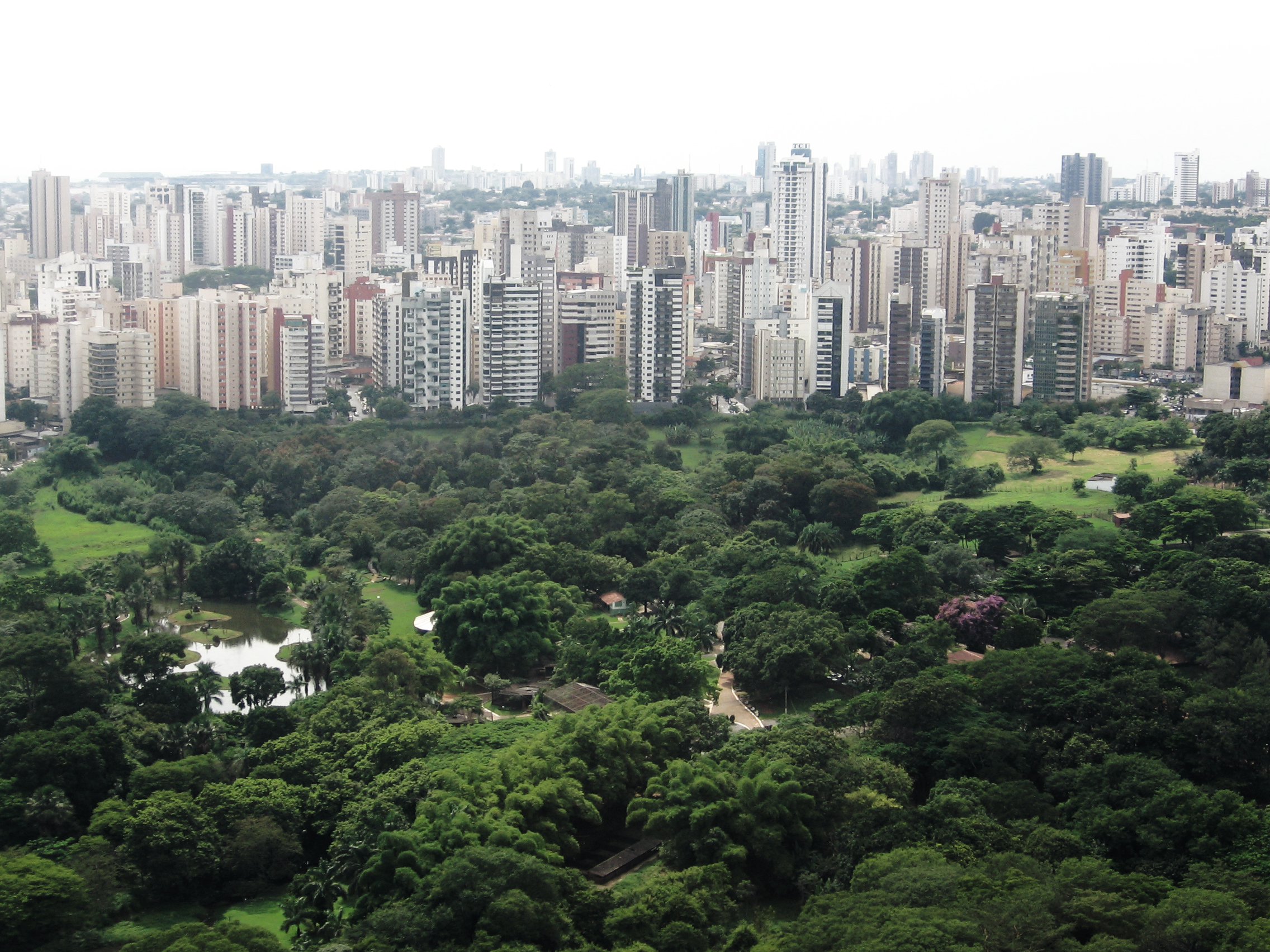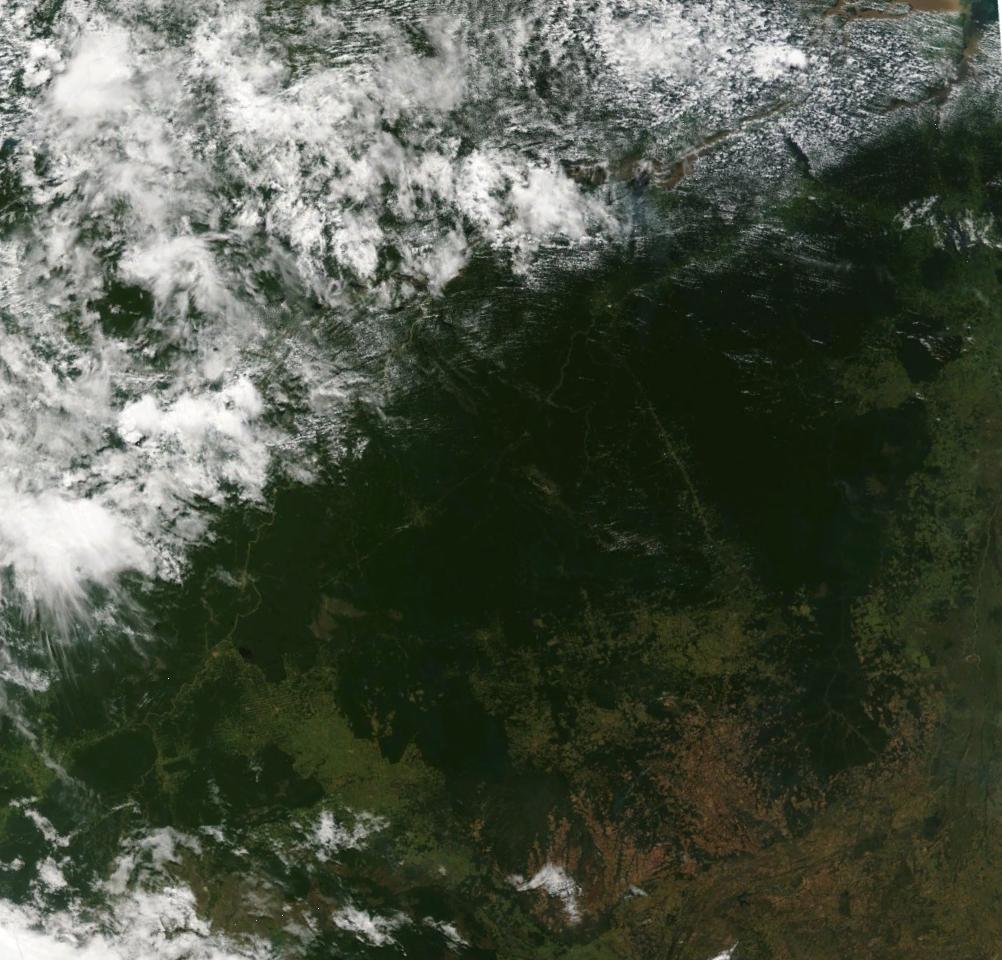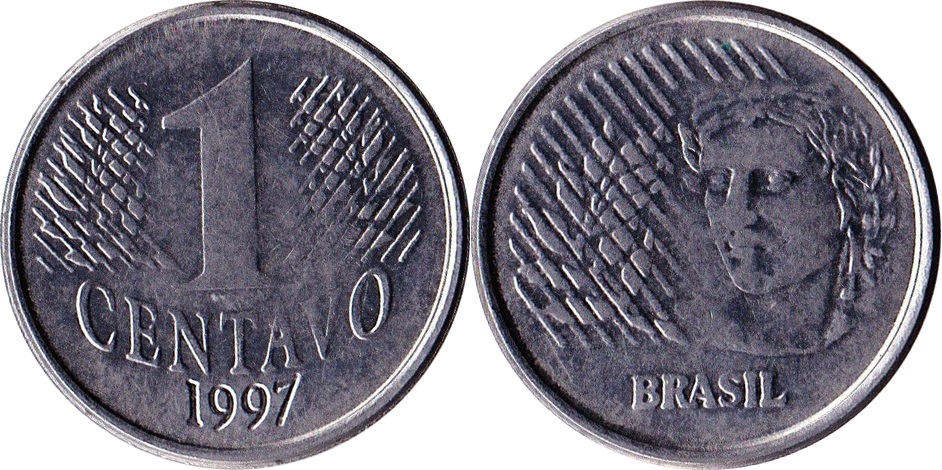|
Goiás
Goiás () is a Brazilian state located in the Center-West region. Goiás borders the Federal District and the states of (from north clockwise) Tocantins, Bahia, Minas Gerais, Mato Grosso do Sul and Mato Grosso. The state capital is Goiânia. With 7.2 million inhabitants, Goiás is the most populous state in the Center-West and the 11th most populous in the country. It has the ninth largest economy among Brazilian federative units. In Brazil's geoeconomic division, Goiás belongs to the Centro-Sul (Center-South), being the northernmost state of the southern portion of Brazil. The state has 3.3% of the Brazilian population and is responsible for 2.7% of the Brazilian GDP. The history of Goiás dates back to the beginning of the 18th century, with the arrival of pioneers from São Paulo. The Rio Vermelho region was the first to be occupied, where Vila Boa (later renamed Goiás) was founded. The development and settlement of the state took place, in a more intensified way, st ... [...More Info...] [...Related Items...] OR: [Wikipedia] [Google] [Baidu] |
Central-West Region, Brazil
The Central-West or Center-West Region of Brazil ( pt, Região Centro-Oeste do Brasil; ) is composed of the states of Goiás, Mato Grosso and Mato Grosso do Sul; along with Distrito Federal (Federal District), where Brazil's national capital, Brasília, is situated. The region comprises 18.86% of the national territory. With the move of the country's federal capital from Rio de Janeiro to Brasília in the 1960s, the construction of roads and railways to the interior of the country made access to the region easier, speeding up population growth and contributing significantly to the region's development. Mato Grosso do Sul was created in 1979, materializing the decision of the government to divide the then called state of Mato Grosso in two states to facilitate to the administration and the development of the region. Brasília International Airport, Marechal Rondon International Airport, Campo Grande International Airport and Santa Genoveva Airport connects the Center-West region ... [...More Info...] [...Related Items...] OR: [Wikipedia] [Google] [Baidu] |
Goiás, Goiás
Goiás (also known as Goiás Velho, Old Goiás) is a municipality in the state of Goiás in Brazil. Its population was 22,381 (2020 est.) and its area is 3,108 km2. It is the former capital of the state and preserves much of its colonial heritage. In 2002, it became a UNESCO World Heritage Site. World Heritage Site It used to be the old state capital of Goiás up until 1937 when the government seat was transferred to the then-recently built Goiânia. It was founded by the famed Bandeirante explorer Bartolomeu Bueno da Silva, nicknamed the ''Anhangüera'', and was called in colonial times Vila Boa de Goyaz ("Good Village of Goyaz" in archaic Portuguese). Given its historical importance, the historical center of Goiás was included on the UNESCO's World Heritage list in 2001. Location Municipal boundaries: *North: Faina *South: Mossâmedes *East: Itaberaí *West: Itapirapuã and Matrinchã *Districts: Calcilândia, Buenolândia, Davidópolis, São João e Uvá. *Povoado ( ... [...More Info...] [...Related Items...] OR: [Wikipedia] [Google] [Baidu] |
Goiânia
Goiânia (; ) is the capital and largest city of the Brazilian state of Goiás. With a population of 1,536,097, it is the second-largest city in the Central-West Region and the 10th-largest in the country. Its metropolitan area has a population of 2,654,860, making it the 12th-largest in Brazil. With an area of approximately , it has a continuous geography with few hills and lowlands, with flat lands in most of its territory, especially the Meia Ponte River, in addition to Botafogo and Capim Puba streams. Goiânia has its origins as a planned city, founded on October 24, 1933 by then Governor Pedro Ludovico to serve as the new state capital and administrative center. Before this, the state capital was the town of Goiás. It is the second most populous city in the Central-West Region, only surpassed by the country's capital Brasília, located about from Goiânia. The city is an important economic hub of the region and is considered a strategic center for such areas as industry ... [...More Info...] [...Related Items...] OR: [Wikipedia] [Google] [Baidu] |
Ronaldo Caiado
Ronaldo Ramos Caiado (Anápolis, September 25, 1949) is a Brazilian politician. An orthopedic physician trained at the School of Medicine and Surgery of Rio de Janeiro, he comes from a family landowners and politicians from Goiás. He is the grandson of Antonio Ramos Caiado. Caiado served as chairman of the União Democrática Ruralista in the late eighties (1986-1989), an organization that aims to defend the interests of landowners. In politics Caiado ran for president with the PSD, at 1989 Brazilian presidential election, obtaining 0.68% of the votes. He was elected federal deputy for Goiás in 1990. The following year he joined PFL - now renamed DEM, to which he is still affiliated. He ran for governor of Goiás in 1994, obtaining 3rd place with 23.18% of the votes. Caido was re-elected federal deputy successively in 1998, 2002, 2006 and 2010. In 2014 he was elected Senator and from February 1, 2015 to January 1, 2019 has been the DEM bench leader in the Senate. In the O ... [...More Info...] [...Related Items...] OR: [Wikipedia] [Google] [Baidu] |
Jorge Kajuru
Jorge Kajuru Reis da Costa Nasser, better known as Jorge Kajuru (born January 20, 1961) is a sports journalist, broadcaster, television presenter, businessman and Brazilian politician affiliated with the Brazilian Socialist Party (PSB), being a senator for the state of Goiás. Between 2017 and 2019, he was a councilor of Goiânia, being the most voted in the city in the 2016 election. Career When he was still living in Goiânia, Kajuru was the owner of Rádio K (Rádio Clube de Goiás). The radio was temporarily taken off the air on several occasions during the mandate of Governor Marconi Perillo, of the PSDB. In 2002, the TRE of Goiás determined, in response to the governor's representation, to close the radio station for eight days due to repeated non-compliance with the electoral law. In the early 2000s, he was in charge of sports programs on RedeTV!, from where he resigned in 2002. The following year, after a frustrated negotiation with Globo, he closed with Band to pr ... [...More Info...] [...Related Items...] OR: [Wikipedia] [Google] [Baidu] |
States Of Brazil
The federative units of Brazil ( pt, unidades federativas do Brasil) are subnational entities with a certain degree of autonomy (self-government, self-regulation and self-collection) and endowed with their own government and constitution, which together form the Federative Republic of Brazil. There are 26 states (') and one federal district ('). The states are generally based on historical, conventional borders which have developed over time. The states are divided into municipalities, while the Federal District assumes the competences of both a state and a municipality. Government The government of each state of Brazil is divided into executive, legislative and judiciary branches. The state executive branch is headed by a state governor and includes a vice governor, both elected by the citizens of the state. The governor appoints several secretaries of state (each one in charge of a given portfolio) and the state attorney-general. The state legislative branch is the legi ... [...More Info...] [...Related Items...] OR: [Wikipedia] [Google] [Baidu] |
Tocantins (state)
Tocantins () is one of the 26 states of Brazil. It is the newest state, formed in 1988 and encompassing what had formerly been the northern two-fifths of the state of Goiás. Tocantins covers and had an estimated population of 1,496,880 in 2014. Construction of its capital, Palmas, began in 1989; most of the other cities in the state date to the Portuguese colonial period. With the exception of Araguaína, there are few other cities with a significant population in the state. The government has invested in a new capital, a major hydropower dam, railroads and related infrastructure to develop this primarily agricultural area. The state has 0.75% of the Brazilian population and is responsible for 0.5% of the Brazilian GDP. Tocantins has attracted hundreds of thousands of new residents, primarily to Palmas. It is building on its hydropower resources. The Araguaia and Tocantins rivers drain the largest watershed that lies entirely inside Brazilian territory. The Rio Tocantin ... [...More Info...] [...Related Items...] OR: [Wikipedia] [Google] [Baidu] |
List Of Brazilian States By Area
The federative units of Brazil ( pt, unidades federativas do Brasil) are subnational entities with a certain degree of autonomy (self-government, self-regulation and self-collection) and endowed with their own government and constitution, which together form the Federative Republic of Brazil. There are 26 states (') and one federal district ('). The states are generally based on historical, conventional borders which have developed over time. The states are divided into municipalities, while the Federal District assumes the competences of both a state and a municipality. Government The government of each state of Brazil is divided into executive, legislative and judiciary branches. The state executive branch is headed by a state governor and includes a vice governor, both elected by the citizens of the state. The governor appoints several secretaries of state (each one in charge of a given portfolio) and the state attorney-general. The state legislative branch is the legisla ... [...More Info...] [...Related Items...] OR: [Wikipedia] [Google] [Baidu] |
Brazilian Real
The Brazilian real (pl. '; sign: R$; code: BRL) is the official currency of Brazil. It is subdivided into 100 centavos. The Central Bank of Brazil is the central bank and the issuing authority. The real replaced the cruzeiro real in 1994. As of April 2019, the real was the twentieth most traded currency. History Currencies in use before the current real include: * The '' Portuguese real'' from the 16th to 18th centuries, with 1,000 ''réis'' called the '' milréis''. * The '' old Brazilian real'' from 1747 to 1942, with 1,000 ''réis'' also called the '' milréis''. * The '' first cruzeiro'' from 1942 to 1967, at 1 cruzeiro = 1 ''milréis'' or 1,000 ''réis''. * The '' cruzeiro novo'' from 1967 to 1970, at 1 cruzeiro novo = 1,000 first cruzeiros. From 1970 it was simply called the '' (second) cruzeiro'' and was used until 1986. * The '' cruzado'' from 1986 to 1989, at 1 cruzado = 1,000 second cruzeiros. * The ''cruzado novo'' from 1989 to 1990, at 1 cruzado novo = 1,000 cruz ... [...More Info...] [...Related Items...] OR: [Wikipedia] [Google] [Baidu] |
Minas Gerais
Minas Gerais () is a state in Southeastern Brazil. It ranks as the second most populous, the third by gross domestic product (GDP), and the fourth largest by area in the country. The state's capital and largest city, Belo Horizonte (literally "Beautiful Horizon"), is a major urban and finance center in Latin America, and the sixth largest municipality in Brazil, after the cities of São Paulo, Rio de Janeiro, Salvador, Brasília and Fortaleza, but its metropolitan area is the third largest in Brazil with just over 5.8 million inhabitants, after those of São Paulo and Rio de Janeiro. Nine Brazilian presidents were born in Minas Gerais, the most of any state. The state has 10.1% of the Brazilian population and is responsible for 8.7% of the Brazilian GDP. With an area of —larger than Metropolitan France—it is the fourth most extensive state in Brazil. The main producer of coffee and milk in the country, Minas Gerais is known for its heritage of architecture and colonia ... [...More Info...] [...Related Items...] OR: [Wikipedia] [Google] [Baidu] |
